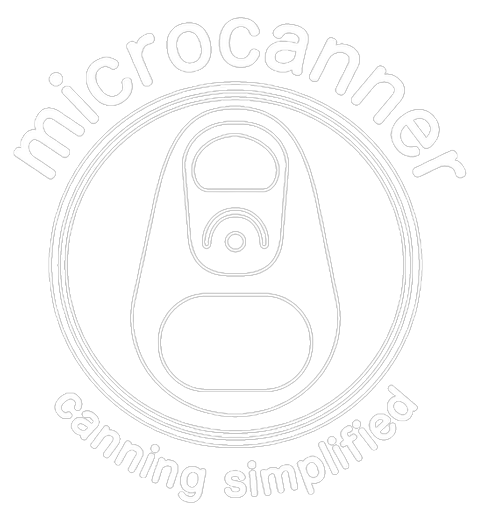Frequently Asked Questions
Collapsible content
Too Much Foam
It is crucial to have your tank at 33 degrees Fahrenheit days before your canning run. The temperature gauge on your tank might not be accurate either. Especially when you are new to canning it is essential to get your beer cold enough to where the beer in the cans after being filled is 34 degrees Fahrenheit. A great way to check this is to get a small kitchen temperature probe and stick it in the can after the can is filled to see what temperature it is filling at. If you cant get your beer to come into the can at 34 degrees make sure you are not using any beer hose extensions, if you are not using a hose extension and cant achieve 34 degrees Fahrenheit simply chill your beer for longer. Other things that can affect foaming is high head pressure, over carbonation, bad pinch tubes and a co2 pocket in the Y-manifold. To ensure a good canning run make sure you've been chilling your tank for an extended period, start with your head pressure low, ensure that your pinch tubes are not bad and rotate the Y-manifold while purging beer to ensure any co2 pockets are released. Always check the temperature in the can when the foam is excessive.
When and where should I lubricate my machine?
You should rinse and CRC silicone lubricant your machine before and after every canning run. CRC silicone lubricant should be applied to all air cylinders after rinsing, be sure to move each cylinder shaft in and out a few times after applying lubricant
What spare parts should I keep on hand?
We recommend that you keep pinch tubes, floats, chuck bearings and extra grease cartridge's on hand. If you own a MC-202 we recommend keeping relay cards and coils on hand instead of pinch tubes.
How often should I replace my pinch tubes?
At maximum every 150,000 cans
Should I clean my co2 lines?
Yes the co2 lines should be cleaned every run. To do so simply hook a pump into your co2 fitting, the pump psi should not exceed 20psi. Use the pump to run PAA through the co2 system. To open the co2 valves press co2 sani on your f3 screen while the machine is running in manual mode
How to run on Kegs
- We recommend to only attempt running on kegs if you operate an ATOMIC or a SWIFT. Running kegs on Microcanners with more fill heads can increase waste due to more cans being filled at one time. It is possible to use kegs with a FLEX or CRAFT, but it is more difficult.
- To run on kegs, please start by storing the kegs you wish to use for four days in a cold room, set to at least 34 degrees or colder.
- Before running move kegs to a storage container, then fill storage container with ice so the keg is fully surrounded by ice.
- Let kegs sit in ice in the cold room for a few hours.
- Move kegs next to the Microcanner and hook up your CO2 head pressure. You should use the lowest PSI head pressure possible for the products carbonation. Too low of a head pressure can cause break out in the line, and too high will increase foam.
- Once you begin running, you will want to avoid unnecessary stops. The more you stop the harder it will be to get going again due to the product warming up.
It is crucial to have the product as cold as possible.
Please see the video
When should I check my cap shedder?
The cap shedder should be inspected every 500,000 cans. Check for loose shedding washers. Inspect the blue slide plate, the cut out in the middle should have smooth edges all the way around. Clean off old grease and reapply grease, you should lightly apply the grease to the bottom of the cap shedder. Do not apply grease directly to the blue plate
